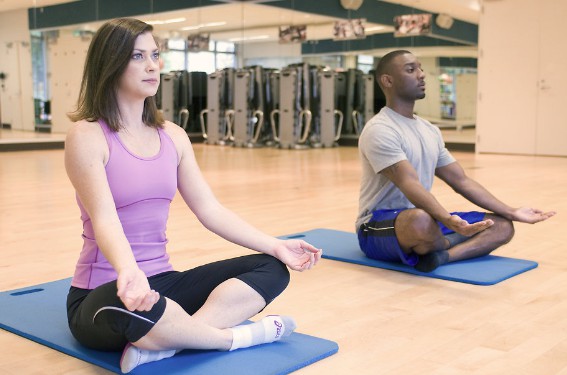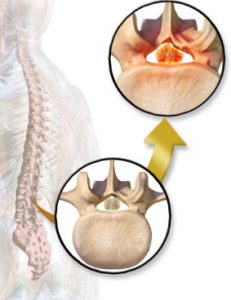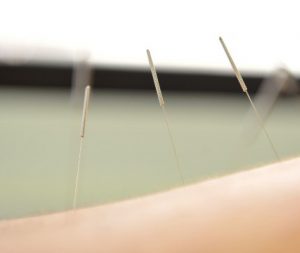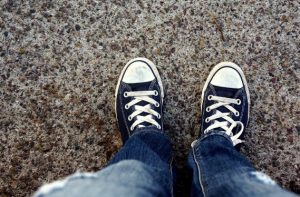Although many people take sciatica to be a disease, it isn’t. Sciatica is only an underlying symptom of a more serious condition, mainly spinal stenosis, spondylolisthesis, herniated disc, and even piriformis syndrome. Sciatica may surface if/when the sciatic nerve is put under pressure or pinched causing excruciating pain. Most of the health conditions outlined above have an almost similar effect to the sciatic nerve, hence the reason why it is commonly mistaken to be a disease.
Interestingly, some patients experience some on and off pains that eventually fade off with time (within a few weeks), while others may experience the pains for much longer, hence chronic sciatica. Some of the most severe cases of sciatic pains require spinal injections to ease the pain, with surgery being the last resort. Patients can also use natural home remedies and adopt some lifestyle changes to help relieve sciatica pain at home. Some of the most effective and recommended self-care measures/treatments for sciatica are outlined below.
Common Known Sciatica Treatments
1. Surgery
Sciatica caused by herniated disc or spinal stenosis can opt for surgery for longer-lasting relief. The doctor however has to run a series of tests to determine whether surgery is the best treatment for the condition. This type of sciatic nerve treatment involves surgically removing the posterior arch of the herniated discs to relieve pressure on the pinched nerve tissue. This solution is however only beneficial for those suffering from herniated disc or spinal stenosis alone.
2. Epidural Steroid Injections
This treatment method is recommended for individuals who have had sciatic pains for more than a month while on pain killers. The steroids are injected close to the sciatic nerve to help ease the pains. The injections are however only limited to 3 per year. While epidural steroid injections may seem like your best shot, doctors warn of possible side effects from the same. These steroids are known to cause bone density loss on the patients, and the injections can be really painful especially in the first few days.
3. Massage
Massage is one of the popular holistic methods used to treat painful muscles and even joints. Massage therapy can be used to help reduce pains around hips, lower back, legs, neck, and the entire back. Individuals suffering from sciatica can take advantage of therapy to reduce sciatic pains, which could also help readjust herniated discs to take care of the pains for good. The patient should schedule massage therapy appointments at least twice per week for the treatment method to be effective. If the massage therapist is good at his/her job, you should start noticing some relief with just the first appointment.
4. Chiropractic Care
Chiropractic care is one of the most sought for treatment method for sciatica and many other forms of musculoskeletal pains. Many patients have attested to experiencing relief within the first session with a chiropractor. Chiropractic care involves trying to readjust herniated discs and other underlying issues that could be causing the pains. The chiropractor identifies the exact spot and cause for the pain, then tries to restore any slipped or displaced discs. Even patients who have had surgery take on chiropractic care to speed up the recovery process. Chiropractic care is also non-intrusive hence no need for phobia. In addition to this, the effects of chiropractic care linger long after the patient has stopped seeing the chiropractor.
5. Acupuncture
Acupuncture is another excellent remedy for individuals who have been battling with sciatica for some time. Acupuncture involves the use of needles inserted into various pressure points to help improve blood circulation while providing relief in inflamed parts and joints. In addition to improving blood flow to the inflamed area, acupuncture improves joint mobility, reduces inflammation and stiffness in the various regions of the body. It also induces increased production of serotonin and noradrenaline hormones in the body, thus improved ability for one to handle pains. With many acupuncturists today, you need to identify the most experienced one to help treat sciatica. A good/experienced acupuncturist should be able to carry out the procedure without the patient experiencing any pains. Although there are needles involved, the procedure is pain-free.
Efficient Home Remedies for Sciatica
1. Rest
Plenty of rest is needed when one is suffering from back pains and sciatica. This however doesn’t mean you should spend much of your time lying down. If possible. Limit bed rest to two days with light activities in between. You however need to be careful with everything you do, such as avoiding heavy lifting, moving slowly, and taking your time to get up. You can also opt for a recliner chair to help reduce pressure on the inflamed nerve too.
2. Physical Therapy and Exercise
Almost every doctor will recommend some bit of physical therapy and exercise for sciatica pain relief. Although you may be in intense pain, taking light exercises such as walking around helps with the pain. Regular body exercise improved blood flow in and out of the inflamed areas, which plays a huge role in relieving pain. Another benefit of physical exercise is that the improved blood flow helps eliminate toxic chemicals and other compounds that count be causing inflammation on the pinched nerve and surrounding tissues.
You also need to be very careful with the exercises too. Do not attempt exercises that strain your back or muscles too much as this could make the condition even worse. Doctors mostly recommend leisure walks, swimming, bike riding, and such. Stretching exercises also do help strengthen core muscles, stabilize the spine, and restore your back’s stability. Taking stretching exercises seriously and regularly also reduces the probability of suffering from back related diseases and injuries.
Combining stretching exercises with swimming, walking, and other light exercises also help reduce inflammation on the compressed sciatic nerve, and loosen the vertebra making it more flexible. Improved back flexibility translates to reduces the risk of herniated discs and sciatica. Doctors and physical therapists advise patients to undertake slightly strenuous exercises to the point where they start feeling uncomfortable. Stretching exercises are only effective if held for at least 30 seconds. This could be longer depending on how much your body/back can handle.
3. Lifestyle Changes (Change posture and lumbar support)
Physical therapy, exercise, and getting plenty of rest may help with the pain; some long-term lifestyle changes are needed to take care of this condition for good. Simple lifestyle changes such as investing in a comfortable chair with adequate back support, recliner seats, sleeping positions, as well as walking style can help manage sciatica. Investing in the right shoe inserts can also reduce pressure on the lower back and buttocks too. Lower back cushions, mattress tops, comfortable bed, etc. should be taken into consideration in your quest to switch to a better lifestyle.
Your sleeping position could also have an impact on the severity of sciatica. Fetal position is recommended for sciatica patients. If you however prefer sleeping on your back, use a soft pillow under your feet to reduce pressure on the lower back. Try switching positions to find the most comfortable position for sciatica relief.
4. Pain Relievers and Muscle Relaxers
Sciatic pains can be discomforting and really painful. Many people will pop a painkiller to help suppress the pain as they await proper medical attention. While pain killers may be efficient in relieving sciatic pains, they only offer short-term solution and treatment for the same. The patient starts to experience pain as soon as the chemicals start wearing off. Extended use of pain killers also has many adverse effects on some of the vital organs of the body, particularly the liver and the kidney. Doctors and physician recommend natural pain relief methods as a way to manage the pain. Patients should only use pain killers for a limited period, and when there’s no other option. Simple deeds such as staying hydrated and regular exercise do help manage pain.
5. Heat and Cold Press
Heat and cold press treatment methods have always been an effective way to treat minor tissue damage and sprains. This treatment method provides almost immediate pain relief due to improved blood flow to these areas. Placing cold and hot packs on the buttocks, lower back, and legs alternate temperature thus causing pain relief. Cold press creates a numbing effect while the hot press raises temperature forcing the heart to pump more blood to the region. This allows for reduced inflammation and eventually low to no pain. You are however advised against using this treatment remedy for extended periods of time as it could cause damage to your skin and nerves.
6. Topical Applications
Pain balms can be used to treat sciatic pains as well. These topical applications for pain come in a wide variety, with each variety useful for a number of applications. The main ingredient in most of these pain balms is menthol, a natural compound that not only promotes tissue relaxation but also blocks pain receptors to that particular area. Applying pain balm on the inflamed area is therefore recommended for pain relief. You could also see a physician for over-the-counter patches and other prescriptions for the same.
7. Hydrotherapy
Hydrotherapy is another effective way of managing lower back pains, muscle spasms, and sciatica. You can use hydrotherapy in a Jacuzzi or a hydrotherapy tub where jets of water exert pressure on the affected area. This works in an almost similar way as massage therapy. Hydrotherapy is commonly used improve one’s health and relieve pain especially for patients recovering from surgery, athletes, and seniors. Jets of warm water are focused on one area for approximately 30 minutes to help reduce inflammation.
8. Yoga
Yoga has been touted as one of the most efficient ways to alleviate sciatic nerve pains non-surgically. Sciatica patients should only take on gentle yoga to see the benefits. The good thing about yoga is that it incorporates gentle and intense stretch exercises on all body muscles, which in return makes one more flexible and less susceptible to injuries. Yoga also helps herniated discs fall back in place (gradually though), thus a long term remedy.
Conclusion
Sciatica is among the most discomforting and painful conditions anyone can have. While over-the-counter pain killers may help mask the pain, patients are advised to try natural ways to contain the pain first. Some of the treatment methods outlined above have been proven to work on most patients, thus recommended. Sciatica pain management is a gradual process that helps take care of the pains over time. With the right approach, you should be able to go on with your day-to-day activities without worrying about a painful back.
All these treatment options work differently on each patient. A step-by-step approach is therefore needed to identify the best treatment method for you. Try all the above-mentioned treatment methods first to see what works, and what doesn’t. Once the effective methods have been identified, you can then focus on those for better pain management, or eventually get cured of sciatica pains.






